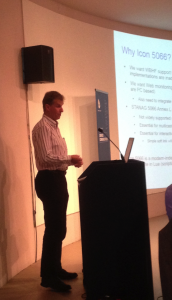We’re pleased to announce that a preview release, R16.4, is now available.
This preview release will be mostly of interest to military users. It will enable the evaluation of a number of new ACP127 and BRASS capabilities.
The following BRASS features are in R16.4.
- ACP127 Broadcast. Including operation over serial and non-ARQ COSS, ship and shore sides, and NATO and Italian RECAP messages, automatic retransmission requests/retransmission, and two minute messages.
- Ship to Shore. Configuration of separate ship to shore circuits is added.
- Off The Air Monitoring (OTAM). The OTAM process can compare the transmit and receive data streams. If they vary by more than a configurable amount (i.e., corresponding to a bit error rate on the received stream) then the OTAM process will flag this to a management process.
- Serial Line support. Support for serial hubs such as Digi Portserver TS. The ACP127 data can be sent direct to modem allowing broadcast with or without the use of a 5066 server.
- Support for Recap messages and retransmission allowing lost messages to be sent successfully.
The new ACP127 management features are:
- Mconsole has a new Circuit Monitoring View, that enables useful monitoring of ACP127 traffic. This also provides the ability to take over the stream manually.
- Mconsole has a new ACP127 Message Transfer View allowing the operator to view ACP127 messages currently queued for transfer out
- Mconsole has a new OTAM monitoring GUI.
Support for the following ACP127 Variants has been added.
- ACP128 support.
- ACP126 support.
- DOI-103 support.
- DOI-103s support.
- ACP 126 support.
- Janap 128 support.
- BSG support.
R16.4 is currently available on Red Hat Enterprise Linux 6, 7 (64 bit) including CentOS equivalents, Windows Server 2008 R2 (64 bit), Windows 2012 and Windows 2012 R2. Debian Linux 8 64-bit will be added in a subsequent update to R16.4.
R16.4 will be supported until the release of our next major release (R17.0) and is for test and demonstration systems only, we will not support running R16.4 in a production environment.
If you wish to obtain a copy of the R16.4 preview release contact us at customer-service@isode.com.


